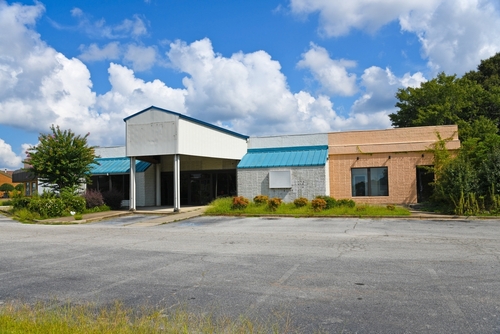The Biden-Harris administration is taking steps to convert high-vacancy commercial buildings to residential use in an effort to create housing that is affordable, energy efficient, and accessible to near transit and jobs.

Office and commercial vacancies across the country have reached a 30-year high, affecting urban downtowns and rural main streets. It also places a strain on commercial real estate and local economies.
At the same time, the country has struggled for decades with a shortage of affordable housing units, which is driving up rental costs.
This new initiative seeks to tackle both of these issues, while reducing greenhouse gases, in several ways.
First, the Department of Transportation (DOT) is releasing new guidance to states, localities, and developers on how the Transportation Infrastructure Finance and Innovation Act (TIFIA) and Railroad Rehabilitation & Improvement Financing (RRIF) programs can be used to finance housing development near transportation, including conversion projects. These two programs combined have over $35 billion in available lending capacity for transit-oriented development projects at below market interest rates.
Under the guidance, transit agencies may transfer properties to local governments, non-profit, and for-profit developers of affordable housing at no cost. The new policy has the potential to turn property no longer needed for transit into affordable housing development particularly when combined with loans from TIFIA or RRIF programs.
Also, HUD is releasing an updated notice on how the Community Development Block Grant fund can be used to boost housing supply – including the acquisition, rehabilitation, and conversion of commercial properties to residential uses and mixed-use development. Further, HUD is increasing outreach efforts to support municipalities and developers seeking to use HUD tools to finance conversions.
Further, the General Services Administration (GSA) will expand on its Good Neighbor Program to promote the sale of surplus federal properties that buyers could potentially redevelop for residential use. To support this initiative, GSA will work with the Office of Management and Budget (OMB) to identify current and upcoming sale opportunities.
In addition, the White House is releasing a Commercial to Residential Federal Resources Guidebook with over 20 federal programs across six federal agencies that can be used to support conversions. These programs include low-interest loans, loan guarantees, grants, and tax incentives, which may be used together to increase the economic viability of conversion projects. To accompany the guidebook, training workshops will be available this fall for local and state governments, real estate developers, owners, builders, and lenders on how to use federal programs for commercial to residential conversions.
Finally, the U.S. Treasury is posting a blog that describes tax incentives for builders of multifamily housing. Through the Inflation Reduction Act, several tax incentives may support eligible builders of multifamily housing to lower the investment costs associated with energy efficiency upgrades, clean electricity generation projects, or even the new or substantial reconstruction and rehabilitation of homes.